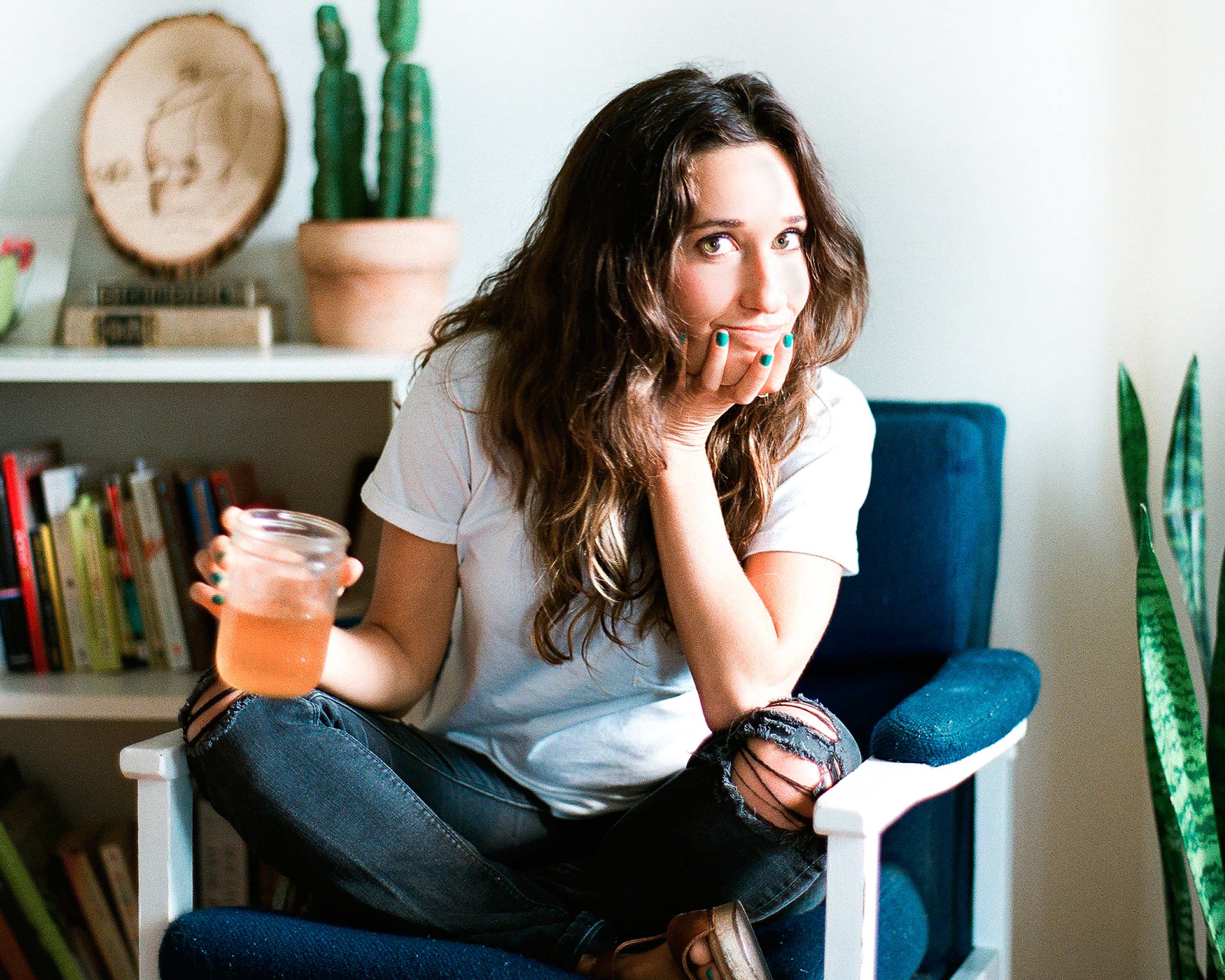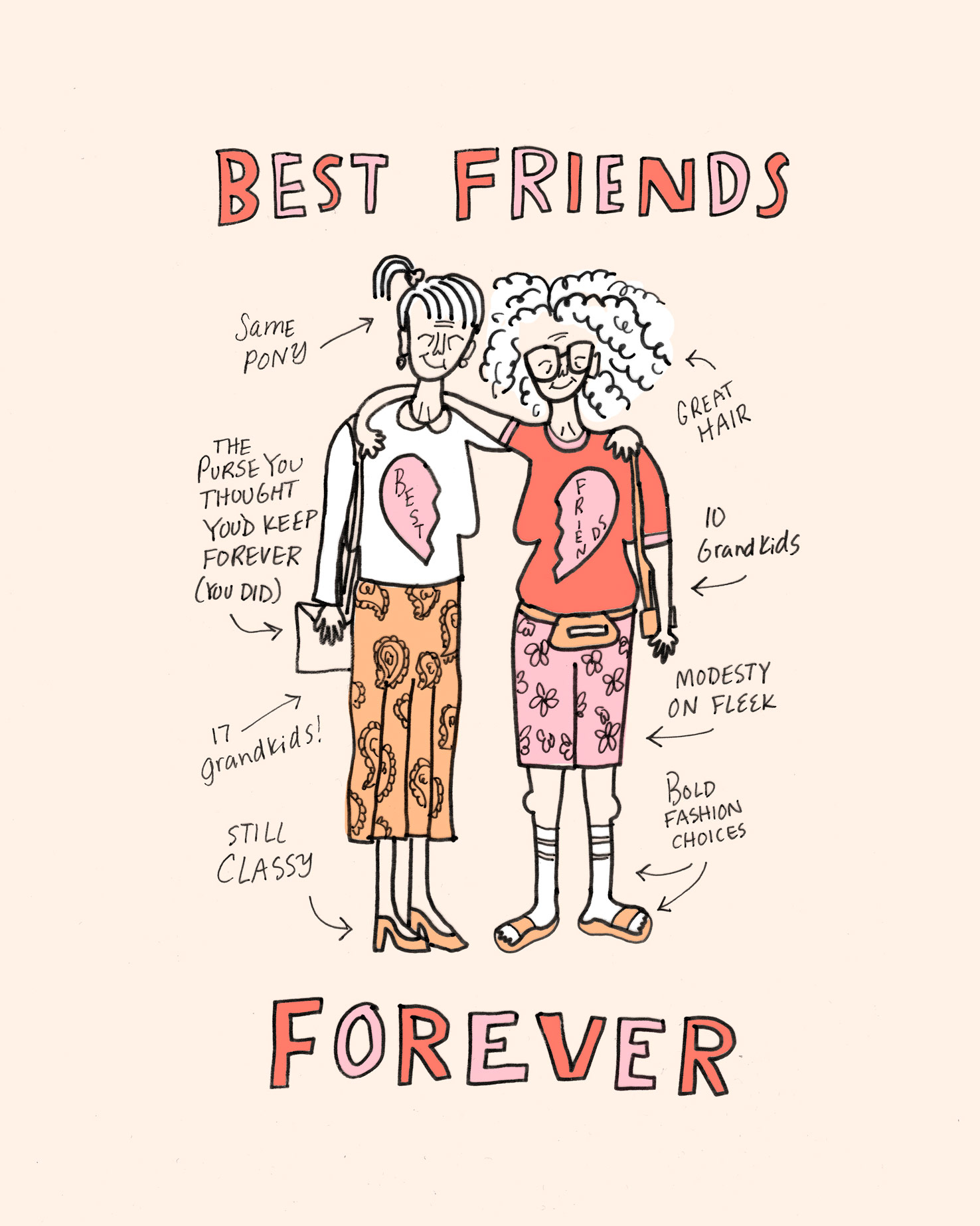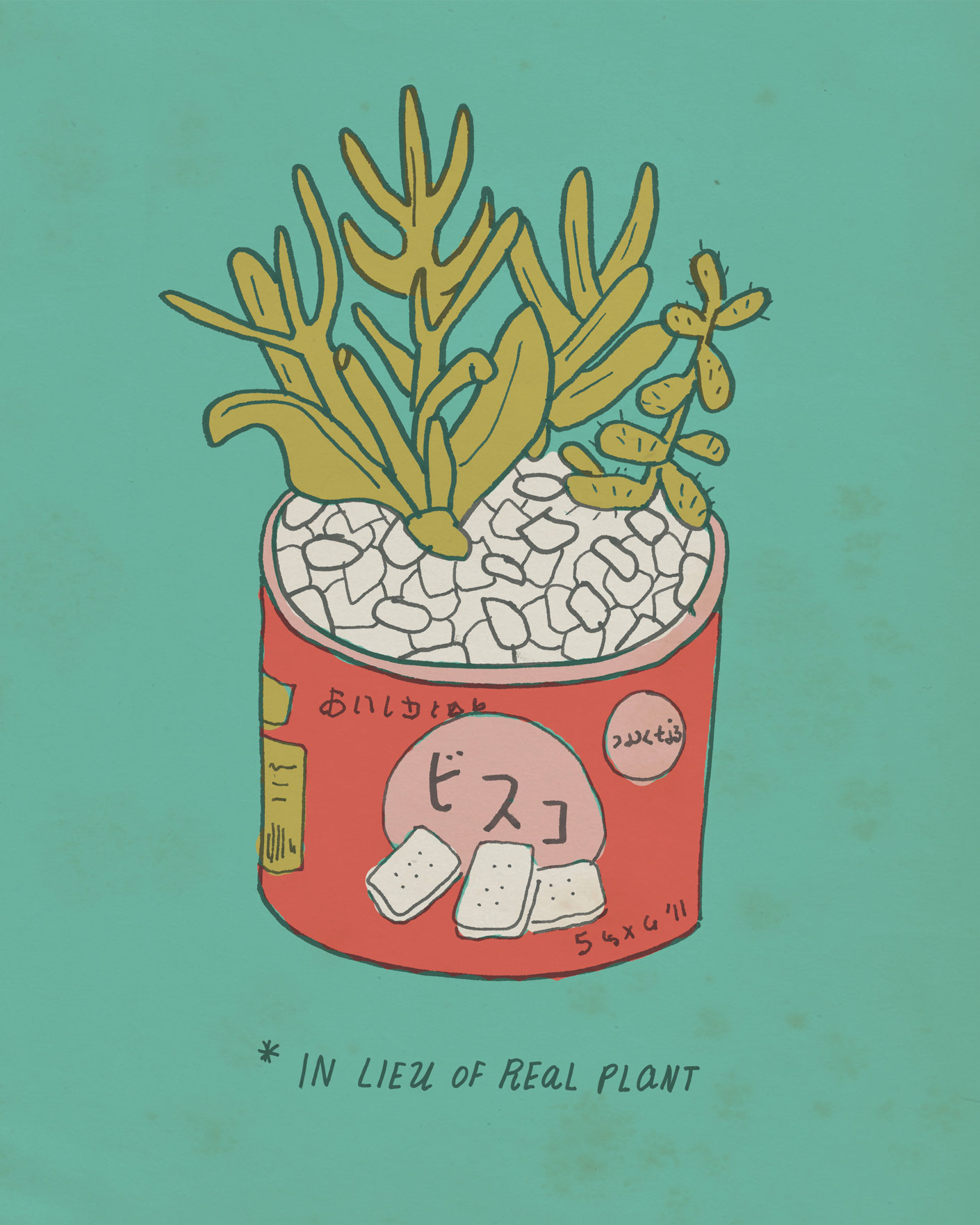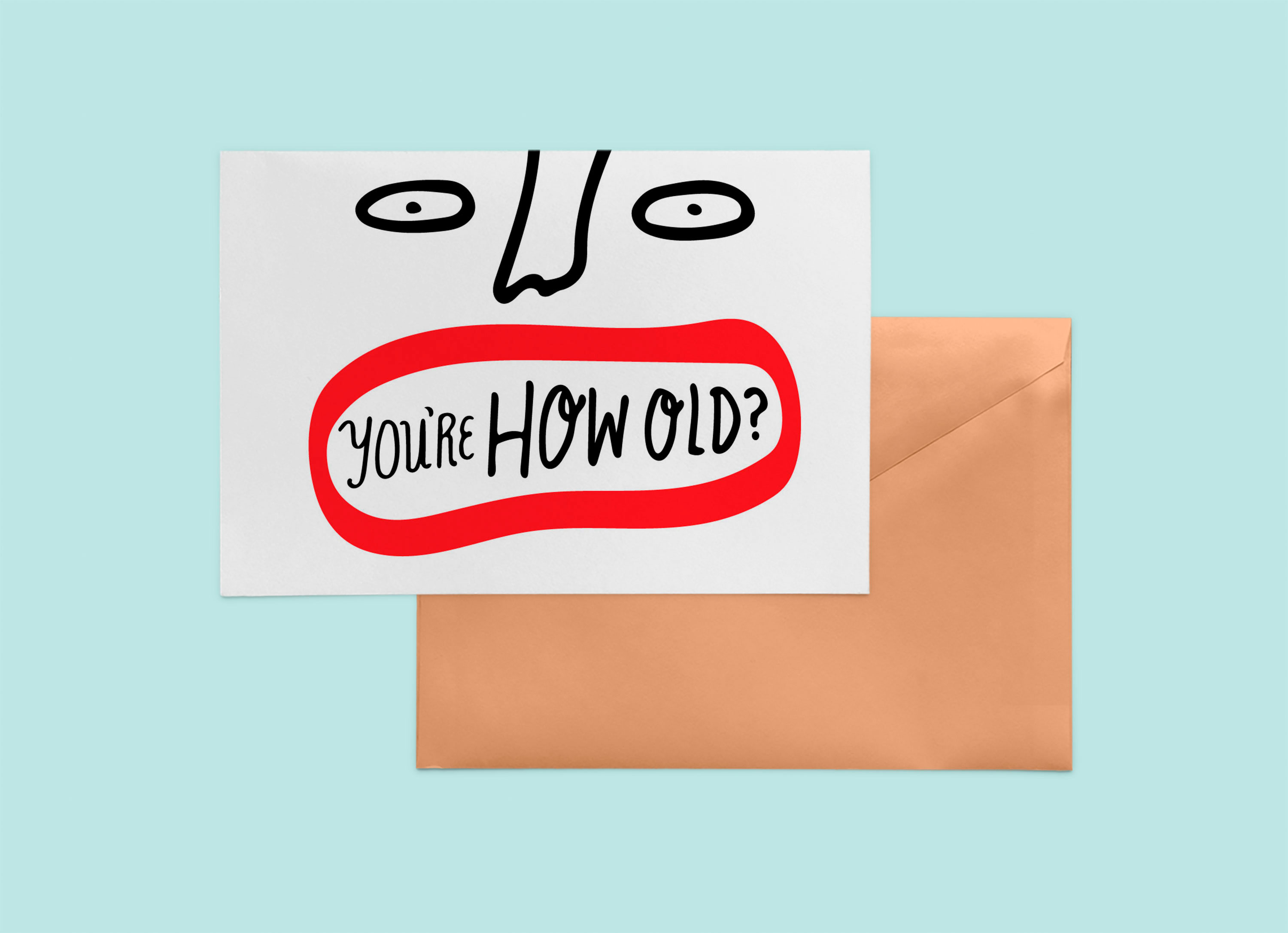
- Interview by Tammi Heneveld August 25, 2015
- Photo by Constance Higley
Becky Simpson
Austin-based designer, illustrator, and writer, Becky Simpson, talks to us about making the leap to freelancing, what she’s learned about celebrating process, and the most important part of any project: getting started.
- designer
- illustrator
- writer
Was there an “Aha!” moment when you realized that you wanted to pursue design, illustration, and writing? When it came time to choose a career path for college, I was torn between fashion design and graphic design. Then my mom asked me, “Do you like designing the clothes or drawing the clothes?” Game over. From that point on, I pursued graphic design and never looked back.
I’m from a small town of 1,300 people; I went to the same school with the same classmates from kindergarten to high school. Everyone knew everyone else, so when someone got a reputation, it tended to stick. Luckily, my reputation was “art kid.” I had always enjoyed writing, too, but I didn’t receive the same kind of validation for it. In college, I wrote a paper for my theater class that was so bad that my professor didn’t think I had even attended the show.
When one of my early elementary school teachers, Mrs. Franson, read us The Very Hungry Caterpillar by Eric Carle, I knew I wanted to write and illustrate books when I grew up. I still dreamed of writing children’s books in college, but I figured it would be in another lifetime, or when I was much older. A few years ago, I decided I had nothing to lose and pitched the idea for my book, I’d Rather Be Short. Before I knew it, I had my first book deal light years before I had anticipated, and it was all because I gave it a shot.
Have you had any mentors along the way? I’ve had a handful of mentors who have made a huge impact on me. Growing up, I always felt supported by the adults I looked up to in my life. My parents were constantly rooting for me, and they provided opportunities for me to grow as an artist. My art teachers also did what they could to help me succeed.
Recently, I’ve found a solid community of designers and women who are strong, assertive, creative, and working with a sense of purpose. Over the last year and a half, I’ve been meeting weekly with my friend, Jen Moulton, who designs beautiful, minimal jewelry. Our “running partner” meetings have been game-changers. Jen is a real visionary and one of the most grounded people I’ve ever known. We give one another accountability, friendship, feedback, and encouragement all in one. That experience is invaluable.
“I’m excellent at following rules: I like approval, affirmation, and acceptance. However, there’s this tiny glitch in my wiring that has made me somebody who would rather do it on my own if I think I can do it better, even if that means sacrificing security.”


As a Creative Resident with Adobe this year, I’ve had the opportunity to connect with many influential designers and entrepreneurs both inside and outside of the company. One of my favorite parts about the program is the mentorship: I’ve had inspiring conversations with people like Erik Natzke, the principal designer at Adobe, and Nic Annette Miller, who is the head of creative development at Tattly. Their feedback has definitely improved my art, helped me think about developing my illustration business, and think about the big picture of my career. Nic challenges me as an entrepreneur and an artist because she does both; she pushes me past my normal boundaries and encourages me to think in new ways. Conversations with Erik about my book project have been so refreshing and brought me a lot of clarity—a paradigm shift that encouraged me to give the book more space to breathe.
Has there been a point when you’ve decided to take a big risk to move forward? I worked at a design firm for a couple of years after college. I knew I wanted to eventually work for myself, but it wasn’t until I landed my first book deal that I had the confidence—or the savings—to take the leap. I’m excellent at following rules: I like approval, affirmation, and acceptance. However, there’s this tiny glitch in my wiring that has made me somebody who would rather do it on my own if I think I can do it better, even if that means sacrificing security.
Leaving that design job to freelance full time was a huge leap because I had absolutely no business sense, no practice freelancing, and no real plan at all. Looking back, I can’t believe that’s how I dove in, but I’m so glad I did. I’m so grateful and excited about where I am now. I wouldn’t be doing what I’m doing today if it wasn’t for the route that brought me here.
You just wrapped your 100-Day Project, #100daysofgettingstarted. What inspired you to do the project, and what did you learn along the way? Yes! What a great way to spend the last 100 days. The 100-Day Project was the perfect structure for exploration and play. The only parameter was to create something new every day for 100 days. Within those boundaries, I was able to practice, refine, explore, create bad art, and create good art. I knew I wanted to focus on creating art for the first few months of my residency, as it’s a rare opportunity to enhance my creative process without being concerned about meeting deadlines or other competing priorities. It’s been incredibly encouraging to explore and enjoy the process.
I decided to call it #100daysofgettingstarted because I’m a big fan of starting. Everything is connected, and we don’t know what can happen unless we try. I love it when you can trace one seemingly serendipitous event back to another seemingly serendipitous event. All of those connections happened because they happened. And things don’t happen unless they start. Having the confidence to start and restart over and over is powerful.
The best part about starting over and over for 100 days is that you’re not only practicing your craft, but you’re also practicing the art of getting started. By the end of 100 days, you become a little less scared of the blank page. I don’t think it’s like riding a bike, though: starting and creativity are more like muscles, and they need to be exercised.
Getting started is often the hardest part. What’s your best advice to those who are struggling to get started? It’s easy to look at people who are making things happen and think, “I wish I was like that. I wish I could be involved in interesting projects and take those sorts of risks.” But the thing is: we all have that in us. Those people aren’t superheroes—they’ve just had practice. They’ve leveled up, and it’s not fair to compare our progress with their high score. My advice is that the more you practice starting, the easier it gets.
I’m big on celebrating process. The awkward first drafts are the warriors that bring us to the finish line. If we can celebrate the process, then we can give ourselves permission to fail. When we have permission to fail, we have nothing to lose. And when we have nothing to lose, there’s nothing stopping us from giving it a go.

“It’s easy to look at people who are making things happen and think, ‘I wish I was like that. I wish I could be involved in interesting projects and take those sorts of risks.’ But the thing is: we all have that in us.”